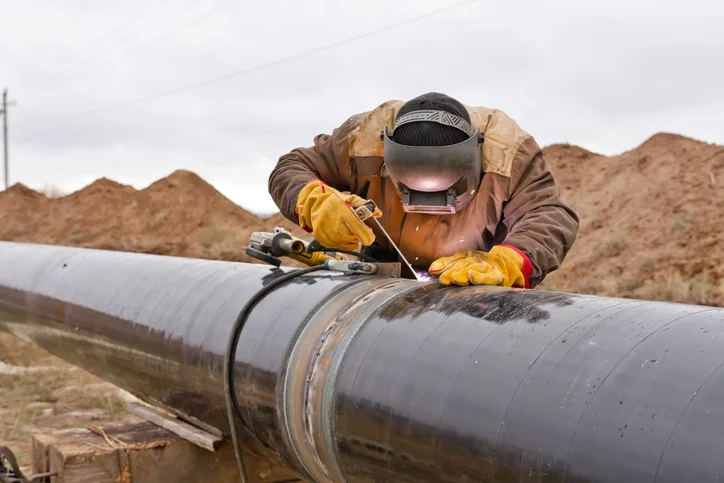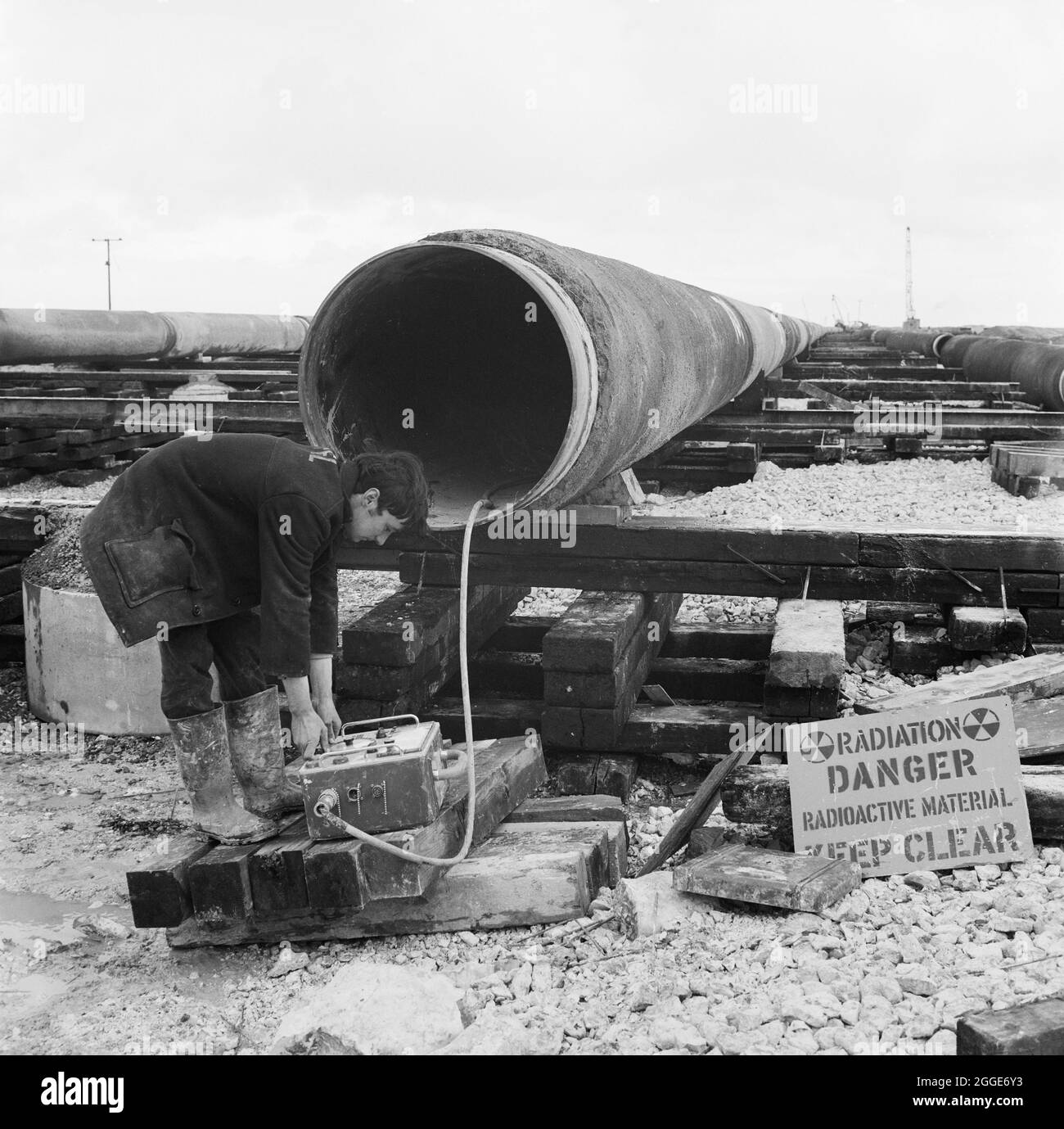Understanding the Fundamentals of Pipe Welding Examination: Vital Factors for Reviewing Weld High Quality and Stopping Failings
In the realm of pipe welding assessment, the stakes are without a doubt high, necessitating a complete understanding of essential principles to make certain weld top quality and reduce failure threats. Different critical elements enter into play, consisting of the selection of ideal products, the application of advanced inspection methods, and the acknowledgment of prevalent welding problems. Additionally, adherence to regulative criteria plays a crucial role in keeping system integrity. Yet, the intricacies intrinsic in these procedures raise essential questions regarding best practices and emerging technologies that can redefine inspection procedures-- inquiries that warrant additional exploration.
Significance of Weld Top Quality
The honesty of a pipe is fundamentally reliant on the quality of its welds, making weld high quality a critical element in ensuring efficient and risk-free procedure. A pipe weld acts as a joint factor where products are joined, and any deficiencies in this field can bring about significant structural weaknesses. Poor weld high quality can cause leakages, ruptures, and devastating failings, posing serious security risks and environmental threats.
Several variables contribute to the top quality of a weld, consisting of the selection of welding process, the abilities of the welder, and the conditions under which the welding is carried out - Pipeline Welding Inspection. Poor prep work, improper warmth input, and contamination can endanger weld integrity, resulting in concerns such as porosity, incomplete combination, or cracks. Consequently, stringent top quality control procedures should be applied throughout the welding procedure to mitigate these threats
Additionally, the lasting efficiency of a pipe is greatly influenced by the sturdiness of its welds. High-grade welds not only boost the general stamina of the pipeline however likewise prolong its solution life, lowering the requirement for expensive repairs and downtime. Thus, guaranteeing superior weld top quality is extremely important in pipeline design and upkeep methods.
Key Inspection Methods
Guaranteeing weld quality demands the application of efficient assessment methods to identify possible defects prior to they cause failings. Pipeline Welding Inspection. Amongst the most commonly utilized approaches are aesthetic inspection, radiographic testing (RT), ultrasonic screening (UT), and magnetic particle testing (MT) Each technique is and offers an unique function selected based upon the particular requirements of the pipe task
Aesthetic evaluation is the very first line of protection, enabling assessors to examine surface area problems, placement, and total craftsmanship. It is a quick and economical method that can reveal obvious defects. Radiographic testing supplies an in-depth view of internal weld integrity by utilizing X-rays or gamma rays to discover subsurface problems. This technique is specifically effective for identifying inclusions, cracks, and voids.
Ultrasonic screening utilizes high-frequency sound waves to assess the thickness and integrity of welds, making it suitable for discovering inner discontinuities. Magnetic fragment testing is a reputable technique for recognizing surface area and near-surface issues on ferromagnetic products by applying electromagnetic fields and great ferrous fragments. By utilizing these key assessment strategies, pipe welding assessors can guarantee the finest criteria are kept, inevitably causing more secure and more trusted pipeline systems.
Typical Welding Problems
Among the most prevalent flaws are porosity, which happens when gas entraps Get More Information in the weld metal, developing spaces that deteriorate the joint. An additional significant issue is absence of fusion, where the weld steel does not appropriately bond with the base product, endangering the joint's strength.

Fractures are additionally a vital issue, manifesting in numerous types such as hot cracks, cold cracks, and root fractures. Each kind presents special difficulties and calls for details examination methods for discovery. Undercut is another problem that can minimize the weld's cross-sectional area, leading to stress and anxiety concentration points, while slag addition takes place when non-metallic product comes to be caught in the weld swimming pool, adversely impacting the mechanical residential properties of the weld.
Additionally, inaccurate grain form can cause irregular tension circulation. Recognizing these typical issues is vital for inspectors and welders alike, as very early discovery and modification are essential to guaranteeing the long life and integrity of pipeline systems.

Materials and Their Impact
Picking the ideal products for pipeline welding dramatically influences the general efficiency and dependability of the welded joints. The choice of base metals, filler products, and finishings plays an essential function in figuring out the strength, rust resistance, and sturdiness of the welds. As an example, carbon steel is typically made use of for its balance of stamina and cost, however it may be vulnerable to corrosion in particular settings, demanding the use of corrosion-resistant alloys or safety coverings.
Furthermore, dissimilar metal welding needs careful factor to consider of thermal expansion homes and prospective galvanic deterioration. The compatibility of materials can significantly affect the microstructure of the weld, resulting in variations in mechanical properties. For example, stainless-steel uses outstanding rust resistance however might need Get More Information particular filler materials to make sure a sound weld joint.
On top of that, the influence of temperature level and ecological conditions on product selection can not be ignored. High-strength steels might shed ductility at raised temperature levels, while low-temperature applications might call for products with boosted strength. Eventually, comprehending the implications of product options is crucial for achieving optimal weld quality and stopping failings in pipeline systems.

Regulatory Criteria and Conformity
Regulative standards and conformity play an essential function in pipeline welding, developing the framework within which effective and secure techniques are maintained. These standards are developed by various companies, including the American Culture of Mechanical Engineers (ASME), the American Welding Culture (AWS), and the Pipeline and Hazardous Products Security Administration (PHMSA) Sticking to these policies makes sure that welding treatments fulfill the needed high quality and security criteria.
Compliance with governing requirements is necessary not only for guaranteeing the honesty of the welds however additionally for protecting the setting and public security. Inspectors are entrusted with verifying that welding operations follow these standards with rigorous assessments of both the processes and the final welds. This includes reviewing welder certifications, welding treatments, and the products used.
Failure to abide by well established guidelines can result in substantial effects, including pricey repair work, legal liabilities, and devastating failures. As a result, companies must incorporate compliance into their functional methods, cultivating a culture of safety and high quality. Regular training great post to read and audits are crucial parts in preserving adherence to these governing standards, ensuring that all workers are educated and outfitted to promote the highest degree of pipeline welding quality.
Verdict
In conclusion, a thorough understanding of pipeline welding inspection is vital for making certain weld top quality and preventing failures. By utilizing vital inspection strategies and identifying usual welding problems, examiners can efficiently evaluate the integrity of welds.
In the realm of pipe welding inspection, the stakes are unquestionably high, requiring a thorough understanding of essential principles to make sure weld top quality and mitigate failure threats (Pipeline Welding Inspection).The honesty of a pipe is essentially dependent on the quality of its welds, making weld top quality an essential factor in making sure safe and effective procedure.A number of aspects contribute to the quality of a weld, consisting of the selection of welding process, the skills of the welder, and the problems under which the welding is executed. Undercut is one more defect that can minimize the weld's cross-sectional area, leading to anxiety concentration factors, while slag incorporation takes place when non-metallic material comes to be trapped in the weld swimming pool, negatively affecting the mechanical residential properties of the weld
In final thought, a comprehensive understanding of pipeline welding examination is crucial for ensuring weld high quality and protecting against failings.